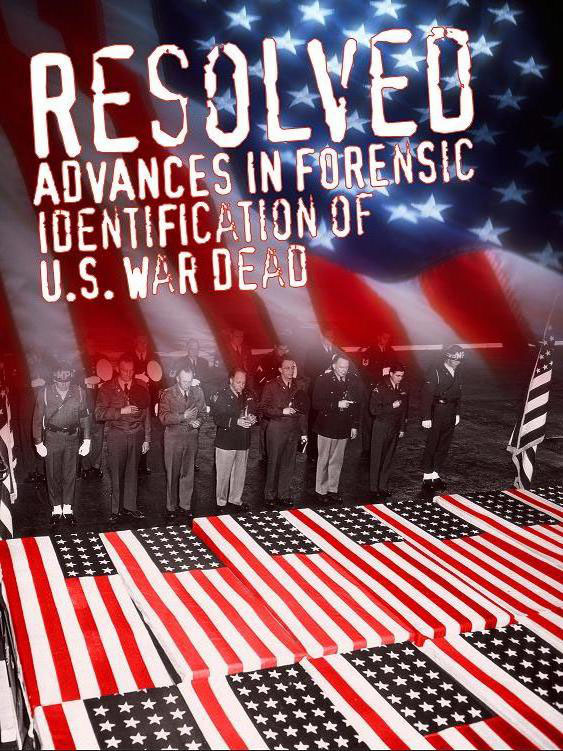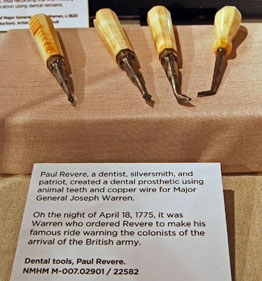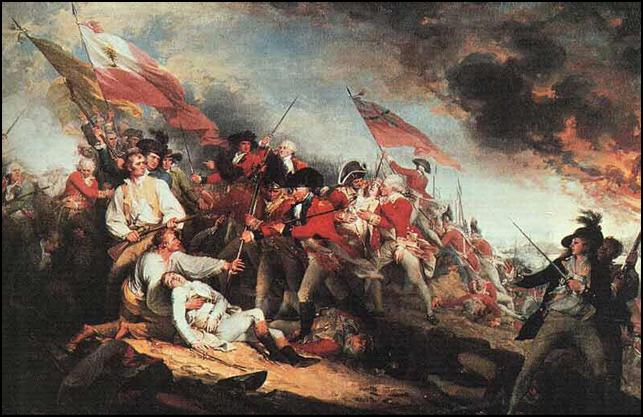Resolved: Advances in Forensic Identification of U.S War Dead
Case Study: Paul Revere
 "Show me the manner in which a nation or community cares for its dead and I will measure with mathematical exactness the tender mercies of its people"
"Show me the manner in which a nation or community cares for its dead and I will measure with mathematical exactness the tender mercies of its people"
— W.E. Gladstone
A RESOLVED Case Study: Major General Joseph Warren and Paul Revere
Joseph Warren of Boston, Massachusetts was a prominent medical doctor and outspoken supporter of colonial rights in the years leading up to the American War for Independence. It was Warren who dispatched his friend and fellow patriot Paul Revere on his famous "midnight ride" warning colonists of the movements of the British army on April 18, 1775, leading to the first shots of the American Revolution on the morning of April 19.
In May 1775, Warren was appointed President of the Massachusetts Provincial Congress, and on June 14, was commissioned a Major General in the Massachusetts provincial forces. Three days later, before receiving official instructions or a command, Warren joined the colonial forces to resist the British attack on Bunker Hill in Cambridge, Massachusetts, and offered his services as a private soldier.
On June 17, 1775, during the Battle of Bunker Hill, Warren was killed. His body was buried by the British in a mass grave outside of Boston. In early 1776, Warren’s family and friends, including Revere, sought to locate and exhume his remains for eventual reburial in an individual grave.
Years earlier, Warren had received a dental prosthetic, constructed of ivory and gold wire, from Revere, a dentist and silversmith by trade. The prosthesis replaced Warren’s upper left canine and first premolar. During the exhumation, Revere recognized the dental appliance he had created for Warren.
Revere’s confirmation of General Warren’s identity was the first instance in this country of an identification of a military service member using dental remains.
 Dental Tools Attributed to Paul Revere
Dental Tools Attributed to Paul Revere
Late 18th Century
In one of the earliest cases of forensic evidence used to indentify a fallen American soldier, Paul Revere recognized dental work he had done on Joseph Warren thus identifying Warren’s remains and allowing the family to receive the body and give it a proper reburial.
About Forensic DNA Analysis
Forensic DNA analysis is a powerful tool for identifying and differentiating one human being from another. Since the early 1990s with the introduction of the Armed Forces DNA Identification Laboratory, personal identification of service members based on DNA analyses has increased significantly. DNA is especially important when traditional scientific methods such as fingerprinting and dental identification have been exhausted. DNA analyses are also crucial in the separation and reassociation of commingled remains from mass fatality incidents, such as transportation accidents and acts of terrorism.
About RESOLVED
Before the Civil War, the United States had no national policy or program prepared to deal with the identification of war dead. Many service members remained unidentified, buried in nameless graves across the nation’s landscape. This experience gave rise to the military’s current responsibility to identify those who died while in service to this country.
RESOLVED highlights the underlying forensic sciences that have evolved in fulfilling this nation’s commitment to the identification and commemoration of the U.S. service member.
This exhibition presents the six lines of evidence critical to the positive identification of a deceased service member. The sequence -- starting with Material Evidence, then Fingerprinting, Dentistry, Anthropology, Pathology, and DNA – reflect the real-world process that a service member’s remains follow at the mortuary, leading to a scientific identification.




